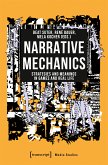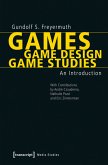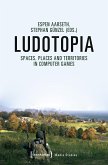Desire indicates phenomena that are implicated in a productive ambiguity. These phenomena associate basic elements of human coexistence, while also referencing complex social processes and institutions. With today's new media we experience an assemblage of desire that maps out new relationships to the social body, to sexuality and gender questions, to ownership, and to the production, perception, and appropriation of moving images. This book brings together a broad spectrum of international positions relating to the time-based, immersive arts presented at the third B3 - the Biennial of the Moving Image Frankfurt/Main 2017 - which focuses on desire in the contemporary world. An extensive essay by Marc Ries develops a theoretical framework relating the moving image to desire. Contributions by Candice Breitz, Douglas Gordon, Johan Grimonprez, Jonas Mekas, Larissa Sansour, Igor Simic, and Frederico Solmi. Desire/Begehren benennt Phänomene, die in eine produktive Ambivalenz eingeschrieben sind. Sie assoziieren Grundelemente menschlichen Zusammenlebens, verweisen aber zugleich auf komplexe gesellschaftliche Prozesse und Institutionen. Mit den gegenwärtigen Medien erleben und erfahren wir ein Gefüge des Begehrens, das neue Verhältnisse zum sozialen Körper, zur Sexualität und Geschlechterfrage, zum Eigentum und auch zur Produktion, Wahrnehmung und Aneignung von Bewegtbildern entwirft. Der Band versammelt ein Spektrum an internationalen Positionen zeitbasierter und immersiver Künste der dritten B3 - Biennale des Bewegten Bildes Frankfurt/Main 2017 - zum Begehren in der Gegenwart. Ein umfassender Essay von Marc Ries entwickelt einen theoretischen Rahmen der Beziehung des bewegten Bildes zum Begehren. Beiträge von Candice Breitz, Douglas Gordon, Johan Grimonprez, Jonas Mekas, Larissa Sansour, Igor Simic und Frederico Solmi.









